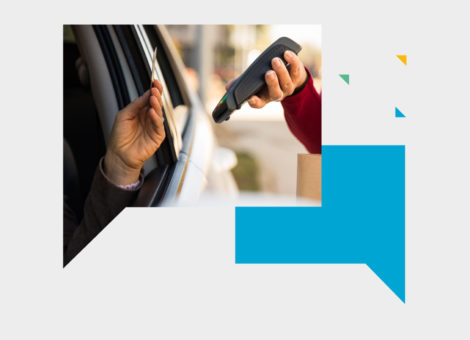The real world: Lessons learned from our fuel retail customers Pt2
Fuel retailers evolving reliance on data
During times of high volatility, it’s crucial to have access to good and timely data. Putting in place frequent, reliable, and automated data feeds comes with its own set of challenges. We asked our Kalibrate customers panel if the way their teams and organizations think of and work with data has changed over the past year.
“We have always taken a very data-centric approach to our decision-making. But what’s changed over the past year is how quickly we interpret the data, how quickly we generate insights — then using these insights, and how we can optimize any opportunities that present themselves in the markets.”
Utilizing technology available to the sector has enabled some fuel retailers to take more control over the speed of their reactions.
“We’ve started using Kalibrate’s API, which has given us greater access and control over pricing data, allowing us to create our own pricing dashboards. This covers a streamlined view on our pricing operations and the competitor landscape – and it’s improved the speed and the scope of changes that we make to help us make more informed pricing decisions.”
A US fuel retailer added;
“We used to use spreadsheets, but now we get a feed four times a day to help us keep up with volatility. Although we don’t use an entirely automated approach yet, it’s amazing how much the increased data flow has helped us keep up with the volatility in the market. With the big range in prices that we’re seeing across competitors, it’s imperative to know quickly if you’re priced with the high guys and using Kalibrate has enabled us to do that and has provided better results across the board.”
From a site optimization and network planning perspective, price volatility causes less of an issue, but the speed of changes in consumer and competitor behavior has a big impact on decision making.
“I don’t think we’ve changed the way we use the data we have available, but we do spend more time analyzing our data to look into the external influence on it. As people’s habits and behavior changes, we use our data to understand what and how it’s changing to improve our understanding. That’s the key thing for me.”
Leveraging digital innovation in the fuel retail sector
The pandemic has accelerated a global trend towards the increased digitalization of products and services. From marketing to payment acceptance to data analytics and insights, digital innovation can add real value to retail fuel operations. We asked customers how they plan to leverage digital innovation either now or in the future.
“As a convenience chain operating in a very competitive space, it’s important for us to get to our customers quickly, from a delivery standpoint. Being where they are – when they need us, is really valuable. I think innovation in this space will be one to watch over the next few years.”
“Thinking about the fuel offering, I think organizations will start to think more about the experience at the pump and how we can make that connection from the store to the pumps. People can already pay at pump, but we’ll start to see payments from mobiles ahead of time and other new innovations being introduced. It’s an exciting time – not just for fuel and convenience, but for retail as a whole.”
Apps and other digitized loyalty schemes have taken off in the past few years and are giving fuel and convenience retailers additional intelligence about their customers, and more communication channels to utilize. As with any technology, this will continue to advance and we may see evolving approaches in the future.
“We’ve already seen a lot of success with our app usage, but we’re barely scratching the surface of the value of the data we get from customer usage. So that’s a really exciting challenge for us to try and tackle over the next few years.”
One North American fuel retailer spoke about the evolution of contactless payment and how this has influenced their latest store plans.
“We can see consumer needs changing and we have to leverage the technology out there to evolve our offering to match. It started with self-checkout registers – then evolved into touchless pay. So you don’t need to touch the bank to pay and you don’t need to touch the register inside the store to pay. This is something that consumers showed preference for during the pandemic that is now considered the norm. We have advanced this even further by engaging a checkout free technology company and we’re expecting to open our first two checkout free stores by the end of this year.”
Not everyone is at the forefront of technology changes. Many fuel retailers have other priorities and objectives – particularly throughout the past few years of challenges. One fast growing US fuel retailer shared with us:
“Through aggressive acquisitions, we’ve grown substantially over the past three years. So the focus has been on other areas, putting us behind in the digital space. However during the pandemic we experimented a lot with different offerings, including home deliveries, and it was fascinating to see what we could learn about our customers during that time of rapid change. The one thing I would say we leveraged in terms of digital innovation is data analytics. When bringing new stores on board we spent a lot of time analyzing the elasticity of pricing, as well as other fuel and in-store metrics and that lead us to make good decisions and get some great results.”
Digital innovation in back-office data is being utilized in a big way across fuel and convenience retailers. As one US retailer explained;
“The availability of mass mobility data continues to amaze me, and it provides an unlimited source of customer insights. It makes it easy to work out our market share by seeing the number of customers that visit us, and our competitors. This is something we’re already working with but we’re yet to leverage its full potential.”
Find out more about the topics discussed:
Read more articles about:
Fuel pricingSubscribe and get the latest updates
You may unsubscribe from our mailing list at any time. To understand how and why we process your data, please see our Privacy & Cookies Policy
Related posts
Location intelligence
Detailed customer insight for gas stations and convenience stores
How to utilize mass mobile data (MMD) to gain a deeper understanding of your gas station and convenience store...

Uncategorized
Convenience is king: Are you adapting to the evolving retail environment?
Kalibrate's CEO shares his 2021 predictions on retail forecourts, increasing M&A activity, changing consumer...

